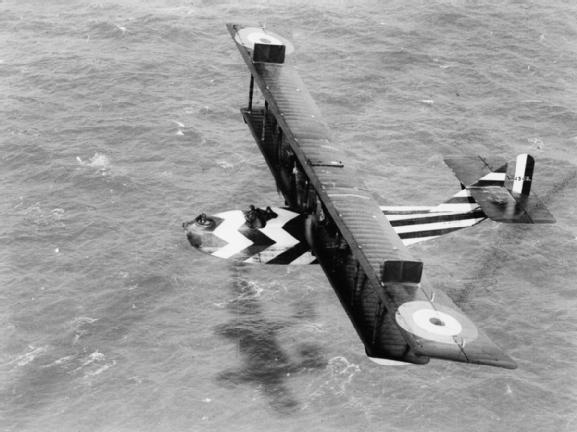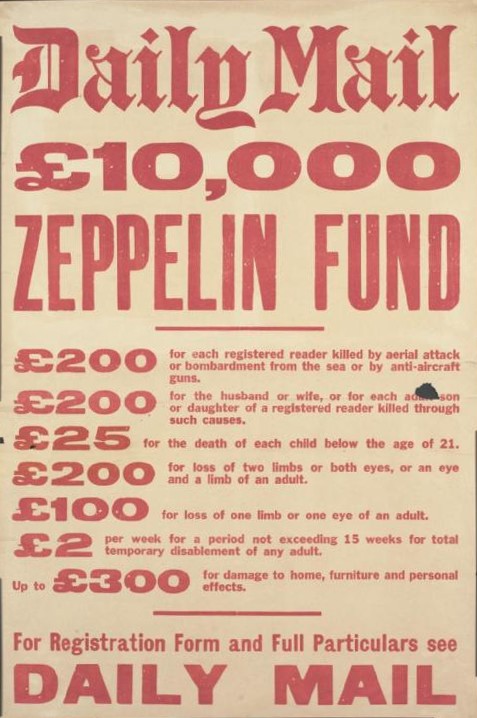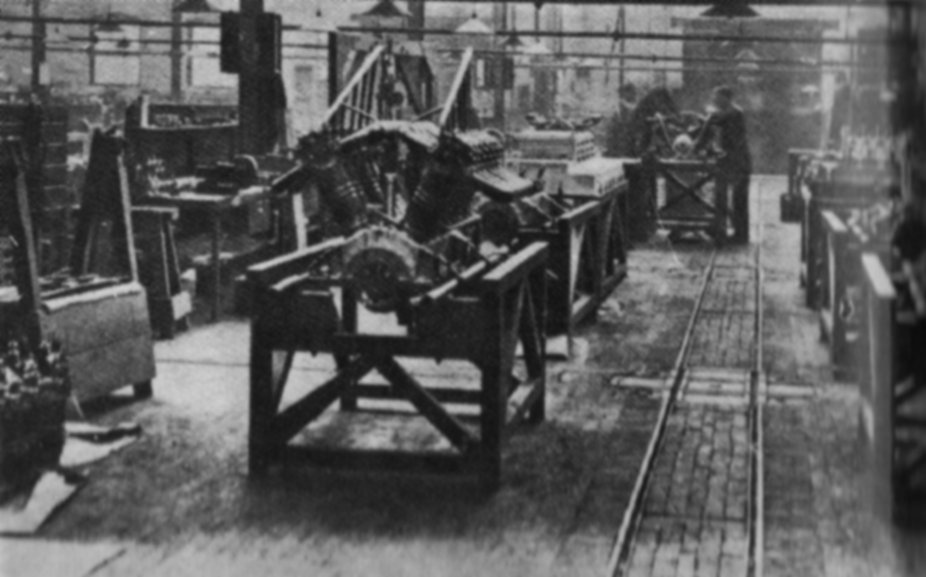|
Felixstowe F.2
The Felixstowe F.2 was a 1917 British flying boat class designed and developed by Lieutenant Commander John Cyril Porte RN at the naval air station, Felixstowe during the First World War adapting a larger version of his superior Felixstowe F.1 hull design married with the larger Curtiss H-12 flying boat. The Felixstowe hull had superior water contacting attributes and became a key base technology in most seaplane designs thereafter. Design and development Before the war Porte had worked with American aircraft designer Glenn Curtiss on a flying boat, ''America'' in which they intended to cross the Atlantic in order to win the £10,000 prize offered by the British '' Daily Mail'' newspaper for the first aircraft to cross the Atlantic. Following the outbreak of war in Europe, Porte returned to England and rejoined the Royal Navy, eventually becoming commander of the naval air station at Felixstowe where he recommended the purchase from Curtiss of an improved version of the '' ... [...More Info...] [...Related Items...] OR: [Wikipedia] [Google] [Baidu] |
Airco
The Aircraft Manufacturing Company Limited (Airco) was an early British aircraft manufacturer. Established during 1912, it grew rapidly during the First World War, referring to itself as the largest aircraft company in the world by 1918. Airco produced many thousands of aircraft for both the British and Allied military air wings throughout the war, including fighters, trainers and bombers. The majority of the company's aircraft were designed in-house by Airco's chief designer Geoffrey de Havilland. Airco established the first airline in the United Kingdom, Aircraft Transport and Travel Limited, which operated as a subsidiary of Airco. On 25 August 1919, it commenced the world's first regular daily international service. Following the end of the war, the company's fortunes rapidly turned sour. The interwar period was unfavourable for aircraft manufacturers largely due to a glut of surplus aircraft from the war, while a lack of interest in aviation on the part of the Britis ... [...More Info...] [...Related Items...] OR: [Wikipedia] [Google] [Baidu] |
Daily Mail
The ''Daily Mail'' is a British daily middle-market tabloid newspaper and news websitePeter Wilb"Paul Dacre of the Daily Mail: The man who hates liberal Britain", ''New Statesman'', 19 December 2013 (online version: 2 January 2014) published in London. Founded in 1896, it is the United Kingdom's highest-circulated daily newspaper. Its sister paper '' The Mail on Sunday'' was launched in 1982, while Scottish and Irish editions of the daily paper were launched in 1947 and 2006 respectively. Content from the paper appears on the MailOnline website, although the website is managed separately and has its own editor. The paper is owned by the Daily Mail and General Trust. Jonathan Harmsworth, 4th Viscount Rothermere, a great-grandson of one of the original co-founders, is the current chairman and controlling shareholder of the Daily Mail and General Trust, while day-to-day editorial decisions for the newspaper are usually made by a team led by the editor, Ted Verity, who succ ... [...More Info...] [...Related Items...] OR: [Wikipedia] [Google] [Baidu] |
303 British
The .303 British (designated as the 303 British by the C.I.P. and SAAMI) or 7.7×56mmR, is a calibre rimmed rifle cartridge. The .303 inch bore diameter is measured between rifling lands as is the common practice in Europe which follows the traditional black powder convention. It was first manufactured in Britain as a stop-gap black powder round put into service in December 1888 for the Lee–Metford rifle. From 1891 the cartridge used smokeless powder which had been the intention from the outset, but the decision on which smokeless powder to adopt had been delayed. It was the standard British and Commonwealth military cartridge for rifles and machine guns from 1889 until the 1950s when it was replaced by the 7.62×51mm NATO. Cartridge specifications The .303 British has 3.64 ml (56 grains H2O) cartridge case capacity. The pronounced tapering exterior shape of the case was designed to promote reliable case feeding and extraction in bolt-action rifles and machine guns a ... [...More Info...] [...Related Items...] OR: [Wikipedia] [Google] [Baidu] |
Netherlands Naval Aviation Service
The Netherlands Naval Aviation Service ( nl, Marineluchtvaartdienst, shortened to MLD) is the naval aviation branch of the Royal Netherlands Navy. History World War I Although the MLD was formed in 1914, with the building of a seaplane base at De Mok, Texel, it developed slowly in the inter-war years due to limited budget. After the graduation of the first pilot group in 1915, on August 18, 1917, the MLD was founded under official decree and De Mok became the main base. At this time, the emphasis was on seaplane operations in the Dutch East Indies where Dornier Wal aircraft enabled patrols of the large archipelago in 1926. The perceived threat from Nazi Germany in the 1930s accelerated the development of air capability and the purchase of new equipment. World War II The German invasion of the Netherlands on May 10, 1940, rapidly overwhelmed Dutch resistance and the MLD aircraft were redeployed to France before the Dutch formally surrendered on 15 May. Shortly after, the ... [...More Info...] [...Related Items...] OR: [Wikipedia] [Google] [Baidu] |
Chilean Air Force
"With full speed to the stars" , colours = Indigo White , colours_label = , march = Alte Kameraden , mascot = , anniversaries = 21 March (Air Force Day) , equipment = 180 aircraft , equipment_label = , battles = * Chilean naval mutiny of 1931 * 1973 Chilean coup d'état * Beagle conflict , decorations = , battle_honours = , battle_honours_label = , flying_hours = , website = , commander1 = General del Aire Hugo Rodríguez González , commander1_label = Commander-in-Chief of the Air Force , commander2 = , commander2_label = , commander3 = , commander3_label = , commander4 = , commander4_label ... [...More Info...] [...Related Items...] OR: [Wikipedia] [Google] [Baidu] |
Supermarine Southampton
The Supermarine Southampton was a flying boat of the interwar period designed and produced by the British aircraft manufacturer Supermarine. It was one of the most successful flying boats of the era. The Southampton was derived from the experimental Supermarine Swan, and thus was developed at a relatively high pace. According to the aviation authors C. F. Andrews and E. B. Morgan, the design of the Southampton represented a new standard for maritime aircraft, and was a major accomplished for Supermarine's design team, headed by R. J. Mitchell.Andrews and Morgan 1981, p. 96. Demand for the type was such that Supermarine had to expand its production capacity to keep up. During August 1925, the Southampton entered service with the Royal Air Force (RAF), with whom the type gained a favourable reputation via a series of long-distance formation flights. Further customers emerged for the type, including the Imperial Japanese Navy, Argentine Naval Aviation, and Royal Danish Navy. Severa ... [...More Info...] [...Related Items...] OR: [Wikipedia] [Google] [Baidu] |
Zeppelins
A Zeppelin is a type of rigid airship named after the German inventor Count Ferdinand von Zeppelin () who pioneered rigid airship development at the beginning of the 20th century. Zeppelin's notions were first formulated in 1874Eckener 1938, pp. 155–157. and developed in detail in 1893.Dooley 2004, p. A.187. They were patented in Germany in 1895 and in the United States in 1899. After the outstanding success of the Zeppelin design, the word ''zeppelin'' came to be commonly used to refer to all rigid airships. Zeppelins were first flown commercially in 1910 by Deutsche Luftschiffahrts-AG (DELAG), the world's first airline in revenue service. By mid-1914, DELAG had carried over 10,000 fare-paying passengers on over 1,500 flights. During World War I, the German military made extensive use of Zeppelins as bombers and as scouts, resulting in over 500 deaths in bombing raids in Britain. The defeat of Germany in 1918 temporarily slowed the airship business. Although DELAG establish ... [...More Info...] [...Related Items...] OR: [Wikipedia] [Google] [Baidu] |
U-boats
U-boats were naval submarines operated by Germany, particularly in the First and Second World Wars. Although at times they were efficient fleet weapons against enemy naval warships, they were most effectively used in an economic warfare role (commerce raiding) and enforcing a naval blockade against enemy shipping. The primary targets of the U-boat campaigns in both wars were the merchant convoys bringing supplies from Canada and other parts of the British Empire, and from the United States, to the United Kingdom and (during the Second World War) to the Soviet Union and the Allied territories in the Mediterranean. German submarines also destroyed Brazilian merchant ships during World War II, causing Brazil to declare war on both Germany and Italy on 22 August 1942. The term is an Anglicisation#Loanwords, anglicised version of the German word ''U-Boot'' , a shortening of ''Unterseeboot'' ('under-sea-boat'), though the German term refers to any submarine. Austro-Hungarian Navy ... [...More Info...] [...Related Items...] OR: [Wikipedia] [Google] [Baidu] |
North Sea
The North Sea lies between Great Britain, Norway, Denmark, Germany, the Netherlands and Belgium. An epeiric sea, epeiric sea on the European continental shelf, it connects to the Atlantic Ocean through the English Channel in the south and the Norwegian Sea in the north. It is more than long and wide, covering . It hosts key north European shipping lanes and is a major fishery. The coast is a popular destination for recreation and tourism in bordering countries, and a rich source of energy resources, including wind energy, wind and wave power. The North Sea has featured prominently in geopolitical and military affairs, particularly in Northern Europe, from the Middle Ages to the modern era. It was also important globally through the power northern Europeans projected worldwide during much of the Middle Ages and into the modern era. The North Sea was the centre of the Viking Age, Vikings' rise. The Hanseatic League, the Dutch Golden Age, Dutch Republic, and the Kingdom of Grea ... [...More Info...] [...Related Items...] OR: [Wikipedia] [Google] [Baidu] |
Rolls-Royce Eagle
The Rolls-Royce Eagle was the first aircraft engine to be developed by Rolls-Royce Limited. Introduced in 1915 to meet British military requirements during World War I, it was used to power the Handley Page Type O bombers and a number of other military aircraft. The Eagle was the first engine to make a non-stop trans-Atlantic crossing by aeroplane when two Eagles powered the converted Vickers Vimy bomber on the transatlantic flight of Alcock and Brown in June 1919. Background At the outbreak of World War I in August 1914, the Royal Aircraft Factory asked Rolls-Royce to develop a new air-cooled engine. Despite initial reluctance they agreed on condition that it be cooled by water rather than air, as this was the company's area of expertise. Design and development Development of the new 20 litre engine was led by Henry Royce from his home in Kent. Based initially on the 7.4 litre 40/50 Rolls-Royce Silver Ghost engine, and drawing also on the design of a 7.2 litre Daim ... [...More Info...] [...Related Items...] OR: [Wikipedia] [Google] [Baidu] |
Hispano-Suiza 8
The Hispano-Suiza 8 was a water-cooled V8 SOHC aero engine introduced by Hispano-Suiza in 1914, and was the most commonly used liquid-cooled engine in the aircraft of the Entente Powers during the First World War. The original Hispano-Suiza 8A was rated at and the later, larger displacement Hispano-Suiza 8F reached . Hispano-Suiza 8 engines and variants produced by Hispano-Suiza and other companies under licence were built in twenty-one factories in Spain, France, Britain, Italy, and the U.S. Derivatives of the engine were also used abroad to power numerous aircraft types and the engine can be considered as the ancestor of another successful engine by the same designer, the Hispano-Suiza 12Y (and Soviet Klimov V12 derivative aero-engines) which was in service during the Second World War. Design and development Origins At the beginning of World War I, the production lines of the Barcelona based Hispano-Suiza automobile and engine company were switched to the production o ... [...More Info...] [...Related Items...] OR: [Wikipedia] [Google] [Baidu] |




.jpg)




